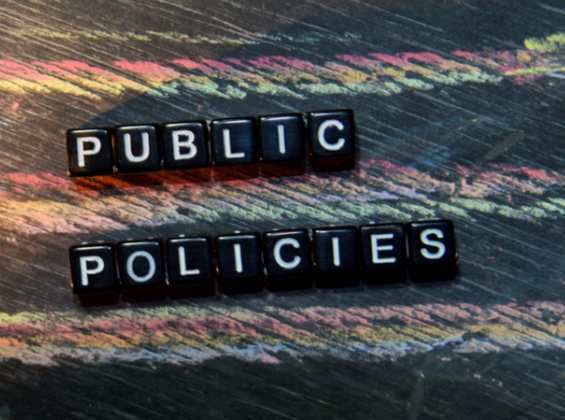Why do farmers grow paddy and burn stubbles? Everyone has a theory. Is this the excellent price they get? They have plenty of irrigation facilities, paddy is easier to grow, stubbles are easy to burn, and they don’t care about the pollution caused by stubble burning. If these are the reasons, hundreds of available and well-thought solutions would have resolved the issue by now.
So if all these and many more reasons are not the root cause of the issue in Punjab, Haryana and Western UP, are they all conspiring collectively to keep the case in perpetual motion? Of course. But all these issues are at work in other nations too?
We partnered with Kisan Sanchar and built a quick project under Wingify’s CSR budget under environment sustainability to answer two main questions:
1. What are the key psychological factors influencing farmers’ decisions to adopt rice growing and, later, each type of rice straw and stubble management;?
2. What communication strategies should be planned and practised to promote alternatives to paddy and non-burning rice straw and stubble management approaches?
Rather than using the standard interview process, we planned to deploy Clay Christensen's “Jobs to be done” (JTBD) theory as explained in various books, mainly “Competing Against Luck”, to identify what jobs a farmer wants to get done when he decides to plant paddy. After that, they burn stubbles and outcomes they expect from these actions.
In a project like the one in the current context, just mentioning that the book was rooted in JTBD, Clay Christensen's theory, this is purportedly meant for product development for start-ups and large companies could raise eyebrows and red flags for some. So be it. Suppose JTBD can be successfully deployed in studying what ails the education sector in the US and finding solutions. Why not use it to learn a challenging problem like stubble burning-related pollution?
But as I thought more about the issue of paddy stubble burning in Punjab, I was increasingly convinced that if something can throw pointers towards resolution of this issue, it could be in finding the jobs for which the farmers in Punjab and elsewhere are hiring paddy for two activities,
1) in deciding to grow paddy, and
2) deciding to burn stubbles.
I'm sure Clay Christensen's theory, the product of a long and rigorous journey across multiple enterprises and industries, shall breathe real life into explaining why so far, the stakeholders, including the policymakers, have not succeeded in preventing stubble burning or finding an economical and feasible alternative to it.
We studied literature and past studies from countries facing similar issues, and we concluded that even designing questionaries to interview farmers and other stakeholders shall take some additional effort. For starters – we utilised three integrated behavioural theories viz Theory of Planned Behaviour (TPB), the Value-Belief-Norm (VBN) and the Health Belief Model (HBM) to understand the psychological factors influencing farmers’ adoption of rice growing and stubble management approach.
Interviewing farmers, their families & focus groups, people in the paddy supply chain operations, administrators, agronomists, etc., with the logistic support of Kisan Sanchar, we believe shall not just bring those jobs on the surface for which farmers are hiring paddy for the two actions listed above but also the outcomes they expect to achieve while performing those jobs.
We expect to dig hundreds of jobs and expected outcomes in the process.
To illustrate the concept with an example - prospective customers or actual users of old mobile phone versions (only capable of calling) could be expected to hire a newly developed mobile phone for the jobs like
1) googling information,
2) computing,
3) entertainment,
4) communication (call, messaging, video calls, etc.),
5) photography (still and video) 6) data storage
- to name just six major jobs - along with what they expect to get from these jobs, users can list hundreds of outcomes they expect. For calls, they may want clarity, volume control, call forwarding, call waiting, etc.
Out of all identified jobs, there would be an active core job: the stable, long-term focal point around which all other needs are defined and around which value creation by an innovator should be centred.
Some of the jobs and associated outcomes would be essentials and no compromise kind for most users, while others could be good to have now or in future updates.
A phone designer without complete knowledge of the essential and no-compromise jobs and outcomes for most users could only design a half-baked product or rely on his luck that the new phone could click.
The same is true for the paddy scene. It beats the logic that with all the fertile areas in India elsewhere, Punjab should grow paddy considering.
1) the local population is not rice eaters and
2) paddy needs a lot of irrigation. At the same time, it is common knowledge that the water level in Punjab has been going down over the years.
3) Cancer cases have skyrocketed in Punjab in the last couple of decades (to understand the link between paddy fields and pollution/cancer, please research this crucial aspect.
But suffice enough to say here that the link is the same as was with the use of Sevin (the pesticide that killed and maimed thousands in Bhopal in 1984) in the cotton belt of Bhatinda, Ferozpur, Faridkot etc., in the 70s / 80s and a train running in the region known by its dubious name “Cancer Express”.
To get to the bottom of this riddle, we have been having discussions with scores of stakeholders from 20th April 2022 onwards.
Meanwhile, they recorded a video where Sardar Jagjit Singh Ji, a farmer near Samrala, during the interview process, shares his heart-touching experiences and thoughts on why he stopped burning paddy stubble. He saw birds fluttering over the burning fire and thought bird parents would surely be searching for eggs and their kids. We needed to use interview questions based on theories picked from behavioural sciences to have unearthed an inspiring gem like this.
(Interview Video Url - https://youtu.be/3HlCx71NIAA)






Leave A Comment
Your email address will not be published. Required fields are marked.